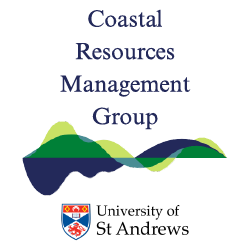The £10 million UK Seafood Innovation Fund will support the UK’s fishing, aquaculture and seafood industries to deliver cutting-edge technology and innovation. By supporting ambitious projects with a long-term view, the fund aims to kick-start a step-change in the productivity and sustainability of UK seafood into the future.
Running for three years, this programme administered by the Centre for Environment, Fisheries and Aquaculture Science (Cefas), will share regular calls for applications, offering interested collaborators the chance to bid for up to £50,000 for feasibility studies, or up to £250,000 for full R&D projects.
A collaborative project based at the University of St Andrews was one the 17 successfully second round of R&D projects.
AS3ID Aim:
This project aims to modify a prototype device which automatically identifies the species, size and sex of brown crabs and lobsters, so that it can be deployed on various types of fishing vessels. This will enable collecting verifiable data that could feed into stock assessments and more localised future fisheries management.
Project Summary:
Many UK crab and lobster units of assessments are out of date and lack data to conduct stock assessment. Stock assessment data collection is time consuming and costly, involving the collection of fishery dependent (catch/landings declarations and some port sampling) and fishery independent data (catch surveys). The former is often statistically limited and the latter often not undertaken regularly due to staff resource and cost limitations. This fishery has additional challenges as most of the vessels are small, geographically dispersed, not currently obliged to collect fishing track data of meaningful spatial and temporal resolution and fishers are not generally regarded as competent to collect data for stock assessment. As part of the Scottish Inshore Fisheries Integrated Data System (SIFIDS) project led by the University of St Andrews (USTAN), a prototype device designed to automatically identify the species, size and sex of brown crabs and lobsters was developed. The device was tested on-board a 10 m inshore fishing vessel. It reliably produced high resolution 2D and 3D point cloud images of specimens in less than a second and used machine learning (ML) in the form of a convoluted neural network (CNN) for automated identification and morphometric measurements for size and sex. The challenge is to take this prototypic system and refine its structure, function and software to allow it to be fully deployed on vessels for the purposes of collecting verifiable data that could feed into stock assessments and more localised future fisheries management.

